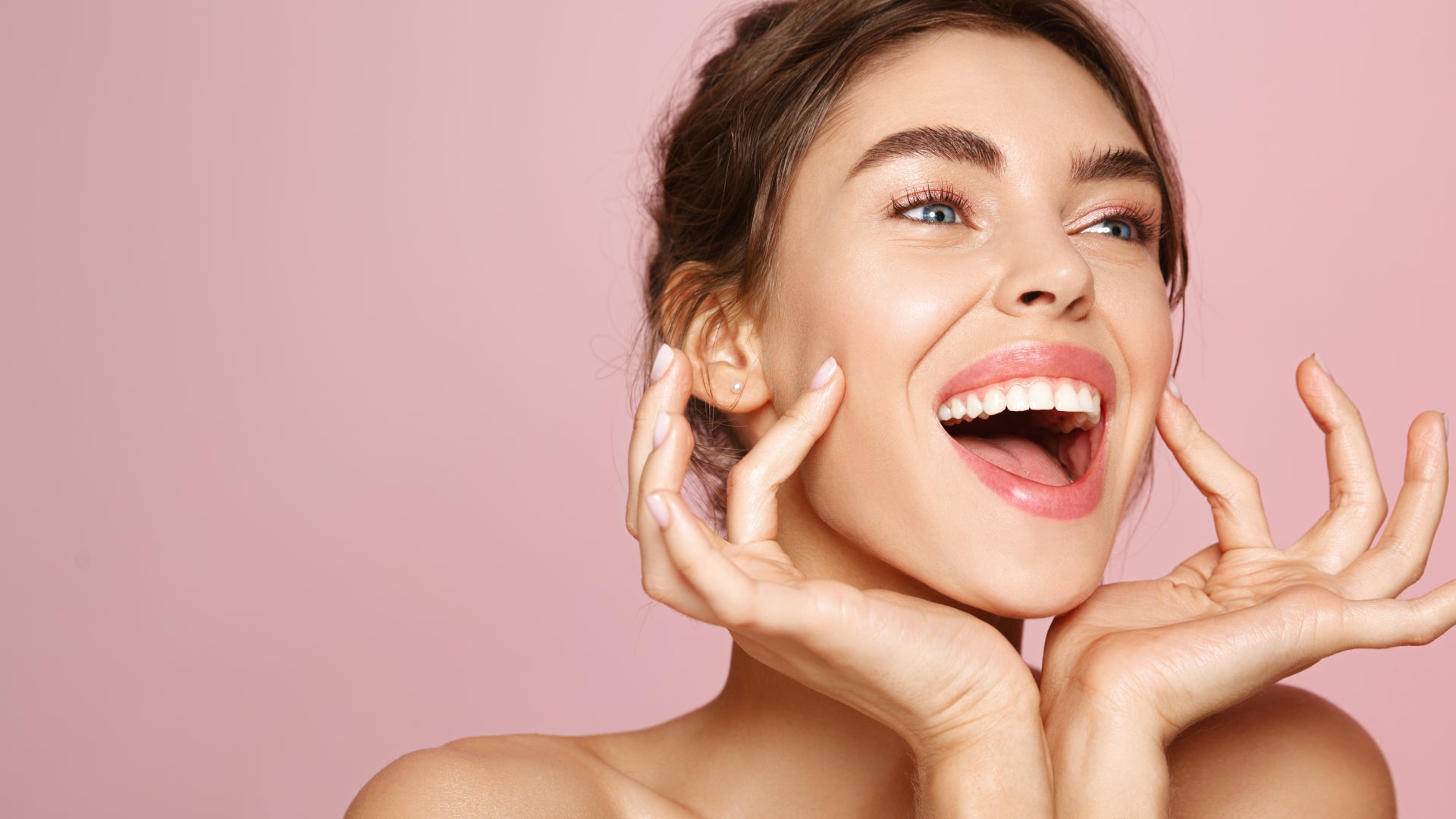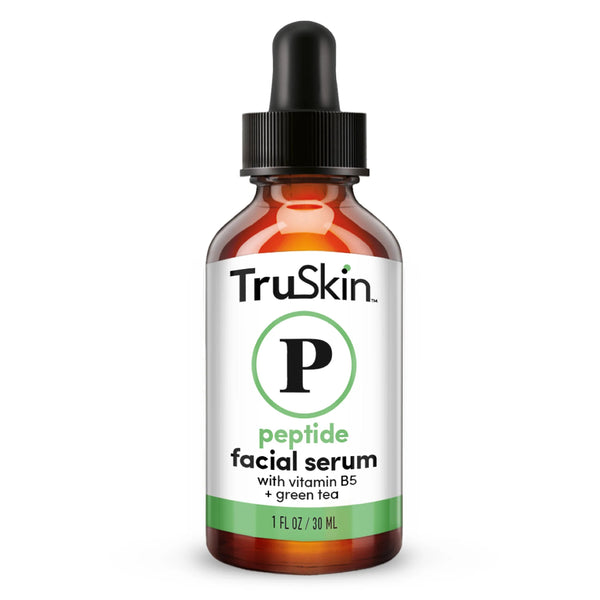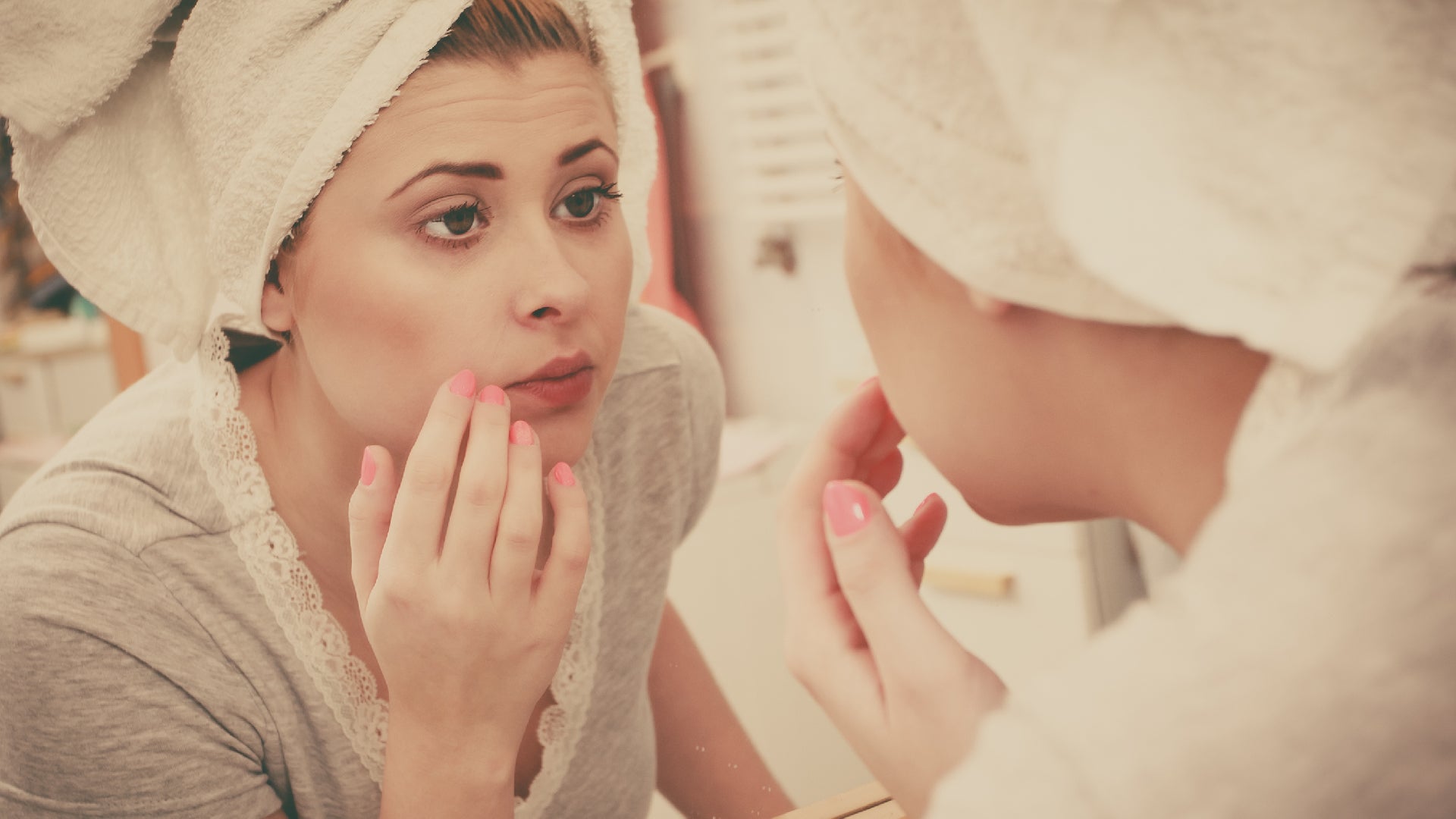
True Radical Honesty From Our Community
What To Do If You Hate Those Fine Lines Around Your Lips
Read MoreAdvice for all of your skin care needs
- all articles
- Acne
- Anti-Aging
- Collagen
- Combination Skin
- Company Announcements
- dry skin
- Exfoliation
- Eye Care
- Facial Redness
- Grooming
- Holidays
- Hyaluronic Acid
- Niacinamide
- Oily Skin
- Retinol
- Sensitive Skin
- Skincare
- Skincare Guide
- Skincare ingredients
- Skincare Routine
- Skincare Tips
- Sun Protection
- Toner
- Vegan Skincare
- Vitamin C
- view all
- Acne
- Anti-Aging
- Collagen
- Combination Skin
- Company Announcements
- dry skin
- Exfoliation
- Eye Care
- Facial Redness
- Grooming
- Holidays
- Hyaluronic Acid
- Niacinamide
- Oily Skin
- Retinol
- Sensitive Skin
- Skincare
- Skincare Guide
- Skincare ingredients
- Skincare Routine
- Skincare Tips
- Sun Protection
- Toner
- Vegan Skincare
- Vitamin C
-
If you're an SPF-all-year kind of person, hats off to you. But if you're not quite there yet, hopefully we can change that by filling you in on the dangers of the sun’s harmful ultraviolet rays.
If only the sun made your skin as happy as your heart. But as delightful as it is to feel the warm rays of sunshine on your skin, the perils of what’s going on just below the surface are simply not worth it.
The truth is, as far as your skin is concerned, the sun is the enemy. If you suffer with dermatitis or rosacea, you’ll be well aware of how heat from infrared radiation can irritate and inflame your skin. And don’t even get us started on prickly heat which occurs when blocked pores trap sweat under your skin, causing blisters and bumps that itch and burn like crazy.No fun at all.
But the sun isn’t solely about heat. For where there is sun there is also sunlight. And along with sunlight, comes ultraviolet (UV) radiation – the biggest cause of premature skin aging and skin cancer. Let us explain…
What Is UV Radiation? The Science Bit
The sun is split into many forms of energy called the electromagnetic spectrum. Most of the electromagnetic spectrum is invisible to the naked eye and thankfully the earth’s atmosphere protects us from exposure to a lot of the harmful stuff.
But even the light that does reach the earth, which falls mainly in the infrared, visible and ultraviolet parts of the spectrum, has its pros and cons. Infrared radiation creates heat, visible light encompasses everything you see and ultraviolet radiation? Well, other than providing your body with vitamin D which, granted, plays an important role in bone and muscle health, its effects are mainly bad. And they all concern your skin.
But first, it’s important to understand the difference between the three types of UV radiation: UVA, UVB and UVC. Bear with us for few more science facts and then we’ll move on: promise.
The Difference Between UVA, B and C
UV radiation is split into three types of rays with various wavelengths. UVA rays have the longest wavelength and are able to penetrate right through the atmosphere. UVB rays have slightly shorter wavelengths which means that some get absorbed by the ozone layer, but most work their way through. And then you have UVC rays which are the shortest of the lot and are completely absorbed by the atmosphere. Phew.
This makes your main concerns UVA and UVB rays.
Due to their longer wavelength, UVA rays penetrate right through clouds and windows which means two things. 1. They’re present all year round, and 2. They can still get you, even when you’re inside. Their wavelength also allows them to penetrate deeper below your skin’s surface into the dermis where they can have disastrous effects, producing skin-damaging free radicals, upsetting collagen and elastin production, indirectly harming DNA and accelerating the visible signs of aging such as fine lines, wrinkles, sagging and discoloration.
UVB rays, with their shorter wavelength, are often filtered by clouds and only penetrate the outer layers of your skin. But this doesn’t mean they’re any less damaging. Far from it. In fact UVB rays are responsible for causing redness, sunburns and directly damaging DNA. They’re also thought to be the root cause of most skin cancers.
Protecting your skin from both UVA and UVB radiation, therefore, is super important. In fact, it could not be more important.
How To Protect Your Skin From UV Damage: Your Sun-Safe Checklist
1. Make Sunscreen Your Top Priority
According to the Centers for Disease Control and Prevention, sunscreen is one of the most important ways to shield your skin from damaging UVA and UVB radiation. But it’s not enough to grab any old formulation, slap it on your skin and hope for the best. You must also ensure these important details are always top of mind…
- Understand Your SPF: Sunscreens must have an SPF (sun protection factor) which denotes how well they block out UVB radiation. SPF 15 blocks around 93 percent with anything above that adding just a small amount of extra coverage. It's generally agreed, however, that SPF 30 is the sweet spot because most of us don’t apply enough product! But remember, SPF only speaks to UVB protection, not UVA. This means you must always look for formulations that are labelled ‘broad-spectrum’ to ensure you have sufficient protection from both. Good news: Our SPF 30 Mineral Sunscreen checks both boxes.
- Don’t Scrimp: Speaking of your application, to help you get the protection that’s promised on the bottle, you should apply a good two tablespoons to your body and a nickel-sized amount for your face. And if you’re in the sun for longer periods of time? Then make sure you reapply every two hours at the very least.
- Know That Waterproof Sunscreen DOES NOT EXIST: According to the FDA there is no such thing as waterproof sunscreen because they're always going to eventually wash off. Sunscreen can be water-resistant for 80 minutes at best, so check your product before hanging around in a pool for hours.
- Go Mineral, All The Way: The FDA currently deems just two sunscreen ingredients as safe and effective – zinc oxide and titanium dioxide. These are mineral sunscreens that sit on your skin and reflect UV radiation before it has a chance to do damage. This is why our SPF 30 Mineral Sunscreen has been formulated with non-nano zinc oxide. Because it’s the best!
2. Cover-Up & Embrace Shade
Broad-brimmed hats, sunglasses, long-sleeved shirts, pants and maxi skirts are great for providing protection from UV radiation so try to cover-up whenever you can and especially during the midday sun. UV radiation is at its strongest between 10 am and 4 pm when the sun’s rays have less distance to cover.
Also, make the shade your BFF. Good shade from dense trees, walls, large rocks or an umbrella can protect your skin from around 15 percent of UV light. And that’s not to be sniffed at.
3. Avoid Tanning Beds Like The Plague
The sun isn’t the only source of UV radiation. Tanning beds use fluorescent lightbulbs that emit a huge amount of UVA radiation, with a little UVB thrown in for good measure. What’s more, studies show that this type of artificial UV radiation can be up to three times more intense than natural sunlight.
Add to this the fact that most people don’t apply sunscreen before jumping on a tanning bed and this whole sorry affair is asking for trouble.
Say NO to tanning beds. End of.
4. Love Your Vitamins
Exposure to the sun causes free radicals which, as you know, love to ruin your skin, destroying important proteins, breaking down collagen and elastin and making your skin age up lightning fast.
Thankfully, antioxidants are to free radicals what Batman is to the Joker. A total killjoy. Antioxidants like vitamins C and E neutralize free radicals to limit their damage and help keep your skin strong, supple and resilient. We combine these two free radical-fighting powerhouses in our Vitamin C Facial Serum which makes this a great morning treatment to apply underneath your moisturizer and sunscreen to amp up your protection game.
5. Check Your Skin
According to the American Academy of Dermatology, one in five Americans will develop melanoma, the most serious form of skin cancer, in their lives. What’s more, the majority of these cases can be attributed to UV exposure. We repeat: protect, protect, protect...
It’s also vital to regularly examine your skin and specifically your moles. When caught early, skin cancer has a 98 percent cure rate, so if you notice anything that looks suspicious you should immediately get it checked out by a skin specialist or doctor. Not sure what a suspicious mole looks like? The Skin Cancer Foundation has a great guide here to help you detect the warning signs.
Everything You Need To Know About UV Protection
read more -
Because, sure, it's extremely important, but summer is not only about SPF, SPF and more SPF…
When we talk of summer skincare, the first thing that always springs to mind is sunscreen. And rightly so. Protecting your skin from that fire ball in the great big sky is one of the most important things you can do for the health of not only your skin, but your entire body. The hard truth is that the sun is accountable for between 80 and 90 percent of external skin aging (ouch!). And not only does it break down important proteins in your skin (hello collagen and elastin), accelerating wrinkles and dark spots but, according to the Skin Cancer Foundation, UV radiation is the number one cause of skin cancers. In fact, around 90 percent of nonmelanoma skin cancers are associated with exposure to the sun.
Scary stuff, right?
Knowing how to protect your skin from the damaging rays of the sun is an important skincare lesson. Feel like you’re not quite on the ball? Well, we’re not going to go into it today because all you need to know is right here. Instead, we're here to talk about everything else involved in summer skincare because warm weather brings a whole slew of other challenges for your skin.
Thankfully, there are many ways to up your summer skincare game to ensure your complexion stays looking fabulous all the way through fall…
1. Level Up Your Cleansing Routine
Why: Hot, steamy days mean one thing: sweat. You have between two and four million sweat glands all over your body, a large number of which are found on your forehead on cheeks. This means your cleansing game needs to be on point to ensure your pores are kept clean and clear.
How: Gel or foam face washes that contain deep cleaning ingredients like activated charcoal, tea tree oil or salicylic acid are great for the summer months. We’re currently in love with our new Tea Tree Super Cleanser which is refreshing and leaves your skin super clean. Cleanse your face every morning and more importantly, every night (when you’ll be at your sweatiest!) using lukewarm, never hot water. And make sure you get right into your hairline as this area is particularly prone to breakouts in the summer.
PS: Cleansing your body every evening is also super important if you’ve been slathered in sunscreen all day.

2. Avoid Pore-Clogging Ingredients
Why: While we’re on the topic of clogged pores, it’s not just sweat you need to worry about in the summer. Excess oils, dirt, debris, sunscreen and makeup can also get jammed in your pores, leading to breakouts on your face and body.
How: Again, regular cleansing is key, but to help keep your pores clear in the first place, try to also use non-comedogenic products across your entire skincare routine.
'Non-comedogenic’ is the term used for ingredients that are unlikely to block your pores. Rich butters and heavy oils, for example, are awesome for locking moisture into your skin and protecting your barrier function. But, they are not non-comedogenic. Far from it. Instead, look for lighter moisturizing ingredients like jojoba oil and shea butter, as well as hydrating gems such as glycerin and hyaluronic acid. You’ll find all of these in our awesome Retinol Moisturizer. And yes, contrary to popular belief you CAN use retinol in the summer.
3. Exfoliate (In Moderation)
Why: Another way to keep summer breakouts at bay is to exfoliate more often than normal. Exfoliation increases cellular turnover and rids your skin of dead skin cells which are not something your pores want to deal with on top of everything else.
How: Over-exfoliating your skin is never wise and it’s one of the biggest issues derms have to deal with. However, if you’re going to up your game, now’s the time to do it. Just tread carefully. Think two or three times a week rather than every day and switch out harsh scrubs containing skin-damaging fruit shells or nut pieces for a gentler product like Ocean Minerals Super Toner which contains naturally exfoliating glycolic acid.
4. Make Friends With Antioxidants
Why: The sun is one of the leading causes of free radicals in the skin. And as innocent as they sound, free radicals have zero redeeming qualities. They’re basically unstable molecules that damage your skin by trying to bind themselves to important proteins and DNA. This causes a process called oxidative stress which weakens collagen and elastin and ages you up in no time. The good news? Antioxidants to the rescue! These little skincare geniuses bind themselves to free radicals, preventing them from damaging all the good stuff in your skin.
How: Antioxidants are awesome all year, but they’re especially important in the summer when you spend more time in the great outdoors. If you’re looking for the cream of the crop we recommend bringing out the big guns, namely vitamins C and E. This antioxidant double act not only reduces oxidative stress, but helps prevent dark spots, reduces the appearance of fine lines and works hard to boost collagen production. Apply just a few drops of Vitamin C Facial Serum every morning after cleansing and before moisturizing to get your daily quota.
5. Don’t Stop Believin'... In Moisturizer
Why: Moisturizing may feel counter-intuitive in the warmer months when your skin feels sweatier and oilier than normal. But here’s the thing, natural oils and sweat do not keep your skin hydrated and moisturized. In fact, the summer heat can dehydrate your skin which will make your skin produce even more oil than normal. And that’s what we call a vicious beauty circle. Thankfully, the solution is simple: continue to moisturize to hydrate your skin, promote cellular turnover and protect your skin's important barrier function.
How: Choose lighter products that won’t clog your pores or make your skin feel heavy and sticky, and look out for moisturizers that are high on humectants. Humectants are ingredients like aloe, hyaluronic acid and glycerin which draw water to the surface of your skin to help keep it hydrated. Try Hyaluronic Facial Serum each night before bed, followed by Vitamin C Deep Hydration Night Cream to moisturize and recharge your skin while you sleep.
Finally, of course, you should continue to apply a daily broad spectrum SPF30 to any exposed skin.
But we hope that goes without saying by now...
Your Summer Skincare Bucket List
read more -
Here’s what we know about the wonderful world of peptides. Heads up: fine lines and rough texture be afraid, be very afraid.
Just when you thought you’d gotten your head around the retinols and hyaluronic acids of the skincare world, another ingredient starts to make headlines and the confusion hits all over again. Take peptides, for example, which is not just one single entity but a whole bunch of ingredients with crazy long names to figure out. Mind-blowing stuff, right? Weeeeell, not so much. Sure, there are tons of peptides used in skincare and yes, they all have pretty science-heavy names like Palmitoyl Tripeptide-1 and Palmitoyl Tetrapeptide-7, but you really only need to know a few basic things in order to get great results.
First, what they are. And second, what they do.
So, here we go…
What Exactly Are Peptides?
OK, time to get your science caps on. Peptides are chemical compounds made up of short chains of amino acids. Amino acids are also the building blocks of protein in your skin. However, the difference is that proteins like collagen, elastin and keratin are large molecules, made up of many, many amino acids, whereas peptides are shorter chains of between two and around 50 amino acids. What does all this mean? Well, studies show that because of their similar yet smaller molecular makeup, peptides are able to penetrate the skin more easily where they signal your cells to produce more of all those fabulous proteins.
How Do Peptides Benefit Your Skin?
Collagen, elastin and keratin are the absolute foundation of healthy skin, giving it valuable support, structure and strength. With age (as well as environmental bad boys like pollution and the sun), your skin produces less and less of these essential proteins which is when all those so-called imperfections you can’t bear start to rear their heads. Pesky lines around your mouth… annoying crow’s feet… a bit of sagging skin here and there… you know the drill. Frankly, other people barely notice these 'flaws' you can't stand, so they're not THAT big of a deal, but that being said, there’s nothing wrong with wanting to care for your skin in order to hold onto your best complexion for as long as possible. And we get that.
It figures, then, that anything you can do to boost collagen, elastin and keratin production (aka apply peptides!) is a major plus for the look and feel of your skin. Think less pronounced lines; firmer, lifted skin and tighter-looking pores. Some peptides even have anti-inflammatory benefits which is great if you suffer with irritation, redness and sensitivities every now and again.
The fact is there's very little to disprove the amazing anti-aging benefits of applying peptides to your skin.
The TruSkin Golden Rules For Peptides In Skincare
1. Peptides Work Best As A Team
Most skincare brands combine a carefully curated cocktail of two or more peptides to offer the best, most complete anti-aging deal for your skincare routine. So, look for multiple ingredients that end with 'peptide' and/or begin with 'palmitoyl’ for a great, all-round product. Also, stick with formulations that are packaged in dark, airtight containers. Light and air can degrade certain peptides which makes them less effective.
Our new Peptide Facial Serum checks all these boxes by combining palmitoyl tripeptide-1, palmitoyl tetrapeptide-7 and palmitoyl tripeptide-5 which are well-known in the biz for their collagen and elastin-boosting skills. Together with a blend of ten silk-derived amino acids this skin-loving serum is the ideal way to help your complexion snap back to life.
2. Leave-On Peptides Are What It’s All About
Experts agree that to gain the best results from peptides you should go for products that get left on your skin, so they have time to penetrate the surface and go about their age-busting business. This means serums, toners and moisturizers are your best bet rather than cleansers or face masks.
As well as our awesome new Peptide Facial Serum, Ocean Minerals Daily Face Super Toner is a great shout here. It contains palmitoyl oligopeptide and palmitoyl tetrapeptide-7 to support collagen, elastin and hyaluronic acid production and help kickstart more youthful-looking skin.
3. Peptides Are Awesome for the Skin Around Your Eyes
Certain active ingredients like retinoids can be a little too powerful for the delicate skin around your eyes. Not so with peptides. Much safer and kinder to your skin, peptides are the ideal choice for dealing with aging eye concerns like crow’s feet, crinkling and crepey skin. This is why we packed a whole bunch of peptides into both of our eye treatments. Peptide Eye Gel, for example, is chock-full of them (the clue is in the name, after all!) and contains palmitoyl tripeptides-1 and -5, plus the mighty matrixyl 3000.
Matrixyl 3000 is a combination of several peptides and has been proven to boost collagen synthesis and help repair damaged, aging skin. In fact, one study showed that Matrixyl can almost double the amount of collagen your skin. We’re so on board with that.
4. Peptides Are Safe For Most Skin Types, But…
Patch testing is still important. Your body makes amino acids and proteins naturally, making peptides very well tolerated by most skin types. However, skin irritation can still occur if you’re super sensitive or if there are other active ingredients in the same product.
To perform a patch test, apply a small dot of product to a discreet patch of your skin. Maybe behind your eyes, inside your elbow or on your wrist. Then leave it for 48 hours to check for irritation. The chances are, you’ll be totally fine but any unlikely reaction that’s painful, uncomfortable, stinging or itchy is a major red flag and a sign that you should discontinue use.
Can Peptides Help Your Skin Deal With The Visible Signs Of Aging?
read more -
Most dermatologists agree that vitamin A is beneficial for our skin. More often referred to as retinol in skincare applications, this powerful ingredient has taken the industry by storm.
Vitamin A serum for face, which is also commonly known as "retinol facial serum," is being used by a growing number of women to combat the aforementioned issues.
Serums may be oil-based or water-based liquids, and they are very light and easy to absorb after being applied to the skin. You can treat your whole face with only a few drops of the product, which is why they usually come in little vials with droppers.
Serums are typically recommended by dermatologists for those who are worried about the signs of aging. It's a great alternative to the usual anti-aging products like moisturizer and sunscreen.
Unfortunately, your skin rarely gets better as you age. As time goes on, many people notice an increase in the appearance of fine lines, age spots, and overall dullness. Retinol, or Vitamin A, can be used to mitigate these signs of aging, which is one of the reasons why it’s so popular.
Vitamin A For Your Face
Products containing vitamin A are known to be quite beneficial to skin health. They assist your skin in maintaining its strength and vitality by restoring its natural function. Thus, it is a potent component of any skincare regimen.
However, there are many various formulations of Vitamin A serum for face, so it’s important to choose not only a product that is high-quality, but right for you.
Vitamin A's Skin-Benefitting Properties
It's quite a list, to say the least. Vitamin A has been studied for its potential use in skin care more than any other product on the market right now.
Vitamin A helps the skin's tone and texture by acting as an exfoliator. As a result, dead skin cells are shed, and new, healthier, smoother cells are generated.
Vitamin A serum for face strengthens and thickens the skin while also helping to decrease the appearance of fine lines and wrinkles. As if that were not enough, it also helps prevent the breakdown of collagen and elastin that is already present, providing you with even more value for your money.

How to Choose the Right Vitamin A Derivative
It bears repeating that vitamin A derivatives are the most powerful tools in the fight against acne. Because vitamin A derivatives are so good at rectifying sun damage, they have also become the standard in anti-aging products.
Although a topical vitamin A serum for face would be beneficial for almost everyone, there is a lot of misinformation out there about which products truly work.
As a form of Vitamin A, retinoids have been utilized in dermatology since their introduction in 1943. However, because retinoids are so powerful, a milder formulation was developed so that they could be used on the delicate skin of the face.
Retinol is the most common form of vitamin A available in over-the-counter skincare products. And even amongst those who are passionate about skincare, knowledge of retinol is limited.
One-size-fits-all does not apply to skincare. No need to panic if the plethora of retinol solutions available has you feeling confused. We're here to provide a hand, so please don't hesitate to contact us.
Our Retinol Facial Serum is known to be one of the best anti-aging products on the market, so you can be sure that it will meet all of your needs. This product doesn't have any harmful ingredients like parabens, gluten, or animal testing.
It also has a calming mix of Vitamin E, Gotu Kola, and hyaluronic acid. Using this product gives you peace of mind since you know it has only the best components for your skin.
Methods for Optimal Application
With vitamin A, it's best to take things slowly but surely. Use 3–5 drops once every three days at first, then twice or thrice a week, and finally every day as your skin adjusts.
A little goes a long way when applying Retinol facial serum. When used with TruSkin Retinol Face Cream Moisturizer, this formula works best when applied to skin that has just been cleaned and kept up with a regular routine.
The most common negative reaction to incorporating vitamin C and retinol into your beauty regimen is discomfort, particularly if you apply many layers of product. To prevent this irritation, try using the TruSkin Retinol Serum for Face at night and the TruSkin Vitamin C Serum for Face in the morning. Don't forget your sunscreen!
How long it takes to see results from a skincare product depends on a number of factors, such as the type of skin you have, how strong the product is, and how often you use it.
Our TruSkin Retinol Serum for Face is a great option if you want to take care of your skin without breaking the bank. You may get the rest of your skincare products from our online shop.
Choosing The Right Vitamin A Serum For Your Face
read more -
Eating chocolate and greasy fries won’t necessarily give you pimples, and a week in the sun won’t make them vanish, either. But there are certain things that really can help prevent and treat acne breakouts. Here, we’ve rounded up ten of the best…
Acne is the most common skin woe in the whole of the United States. Not dark under eye circles, not sun spots, not even wrinkles, but acne. According to the American Academy of Dermatology (AAD), it affects up to 50 million Americans every year, and around 15 percent of women are plagued by some form of acne during their adult lives.
Sigh.
If you’ve had acne on and off for most of your teenage and adult life, you’ll have heard every last trick about how to avoid breakouts. Most of which were probably complete BS. So, we’re here to set the record straight once for all with our guide to the most tried and trusted ways to keep acne under control.
1. Don’t Pick
The world’s fascination with popping pimples shows no signs of going away (thanks mainly to dermatologist Dr. Sandra Lee, aka Dr. Pimple Popper!), but attempting this at home is rarely a good idea. Sure, squeezing that white top might be hard to resist, but it can trigger inflammatory responses in your skin which can delay healing and potentially make your pimples worse.
Picking and prodding zits also introduces a bunch of new bacteria to your skin and quite frankly, it has enough to deal with already. Finally, if all that wasn’t enough, popping pimples creates trauma to your skin which can lead to scabbing, infections, pigmentation and scarring. Don’t do it. Just don’t.
2. Keep Your Skin Clean
A primary cause of acne is blocked pores that get clogged up with oil, dirt and dead skin cells, and then become inflamed or infected with bacteria. This makes cleansing your skin twice daily extremely important – especially at night after sweat, sebum, makeup and sunscreen have built up on the surface of your skin.
Try our new Tea Tree Super Cleanser + which is ultralight, super refreshing and mega calming. It also douses your skin with a powerful blend of nature’s blemish-controlling superstar, tea tree oil, and our ultimate secret weapon for breakouts, MSM.
3. Wash Your Hands
While we’re on the subject of cleanliness, don’t underestimate the power of clean hands. Of course, you’re far too disciplined to pick at your pimples (see above), but even touching your face or leaning on your hands spreads unnecessary dirt, oil and bacteria all over your skin. It’s a tricky habit to kick because it’s usually an unconscious move, but the least you can do is wash your hands regularly to minimize the after-effects.
4. Keep Everything Clean
Not to keep banging on about cleanliness, but there’s more… Towels and pillowcases can also harbor bacteria if they’re not laundered regularly, so make sure you change these out on a weekly basis. And perhaps consider using a fragrance-free detergent if your skin tends to be reactive.
Also, wash your makeup brushes twice a week (especially if you wear makeup daily); shampoo your hair often to avoid oils from your hair transferring to your face, and wipe down your smartphone with a hand sanitizing wipe as often as you remember.
5. Use Retinol
Retinol is an anti-aging given, but it’s also a powerful tool for acne-prone skin. How so? Well, retinol helps unclog your pores by stimulating collagen production and encouraging cell turnover. It also promotes healing and, by keeping your pores clear, can help other skincare or topical acne medication penetrate more effectively.
Introduce Retinol Serum into your evening routine a few times a week and apply it to cleansed skin before moisturizing – you won’t regret it.
6. Wear Sunscreen
This might not be one of the most well-known anti-acne tricks, but it’s important, so hear us out.
In addition to the obvious protection from UV damage, sunscreen reduces redness and can help skin avert post-inflammatory hyperpigmentation (those dark spots that pimples often leave behind). It also reduces the likelihood of your skin becoming dry in the sun which keeps sebum balanced and under control.
So there you go, sunscreen for acne – surprisingly important. Just remember to avoid heavy, pore-clogging sunscreens that can cause breakouts or make the pimples you have even worse. Instead, try our new SPF 30 Mineral Sunscreen which is sheer, lightweight and oil-free.
7. Moisturize… But Do It With Care
Acne often goes hand-in-hand with oily skin which can get forgotten about when it comes to moisturizing. It’s a huge mistake to skip this vital step, however, no matter how oily or pimply your skin may be. If you fail to moisturize your skin, the surface will become dry and your sebaceous glands will overproduce oil to compensate. Cue excess oil which can block your pores and make acne worse.
Your best bet is to hydrate with a light serum like Hyaluronic Acid Serum, then follow with a non-comedogenic moisturizer that’s less likely to block your pores. Oh, and make sure you do this day AND night, especially if you use harsh acne treatments that dry out your skin.
8. Avoid Over Exfoliation
Scrubbing your face feels great, but it’s one of the biggest mistakes you can make, particularly if you’re prone to breakouts.
Exfoliation is great for boosting cell turnover and keeping your pores clean and clear, but too much can cause redness and inflammation – something you definitely don’t want to encourage if acne is already making your skin both of these things. Stick to once a week max, or better yet, allow chemical exfoliating ingredients like salicylic acid to gradually do the job for you.
9. Manage Your Stress
As with seemingly everything, when it comes to acne, stress only makes matters worse. Research has pointed to a direct link between stress and acne, thanks to stress-related hormones like cortisol encouraging your sebaceous glands to produce more oil. Cortisol also reduces your skin’s natural levels of hyaluronic acid which makes your skin more dehydrated and further triggers sebum production. All this excess oil is a veritable playground for bacteria to breed and acne to worsen.
Of course, keeping stress under control is no mean feat, but breathing exercises, yoga, or taking a short walk each day may help clear your mind. Go for whatever form of relaxation suits you and helps take the pressure off, even if only for a few minutes. And remember to get your seven or eight hours of quality sleep while you’re at it. Sleep is SO important.
10. Strike Down Inflammation, Inside and Out
As helpful as skincare tips may be, acne is often an inside job rooted in internal factors influenced by diet and hormones. While addressing these triggers is an important part of getting chronic acne under control, it’s also key to hit back at topical inflammation. This beauty baddie not only exacerbates breakouts, it can increase the likelihood of hyperpigmentation and scarring, so it’s especially critical to diminish it as much as possible.
To help do this on the daily, look for skin saviors with anti-inflammatory clout like vitamin C in the form of sodium ascorbyl phosphate, as well as MSM and aloe, all of which have a reputation for mitigating inflammation and blemishes alike. You can find them teamed up in our Vitamin C Serum, as well as across several other TruSkin formulas—because we know how invaluable these good guys can be for all skin types.
10 Skincare Habits Guaranteed To Help Treat Acne
read more -
Fine lines and wrinkles, dark spots and dry, dehydrated skin: three of the most common signs of aging skin, right there. So, let’s see what we can do to keep them to a minimum, shall we?
Skin aging happens to us all. Literally, every one of us. And while you can’t press a button and stop time (if so, we’d take age 32, please!), you can, for sure, take control of the rate at which you age – to a certain degree, of course. Looking after yourself with a healthy diet and regular exercise is a given. But what else can you do to specifically target your most niggling skin bugbears? Here, we take a look at three of the most common signs of aging skin…
1. Fine Lines & Wrinkles
What They Are: Fine Lines and wrinkles can crop up on your skin pretty early on in life. They happen when your skin’s support network (collagen and elastin) breaks down as you age, causing your skin to become thinner, weaker and less resilient. Kind of like deflating a balloon, your skin loses its plumpness, feels less taut and starts to wrinkle. Lines and wrinkles are usually most prevalent around your eyes, mouth and forehead where your face is the most expressive.
What Causes Them: Father Time is obviously a major factor here, but it’s not just getting old that breaks down collagen and elastin fibers. Exposure to the sun also speeds up this process like lightning. As does smoking; a poor diet that’s laden with salt, sugar, processed carbs and bad fats; environmental pollution, and repetitive facial movements such as smiling, laughing, frowning or squinting.
What You Can Do: One of the most important ways to prevent lines and wrinkles is to look after your skin’s barrier function through gentle cleansing and regular moisturizing. Your skin’s barrier is its outermost layer that protects it from external nasties, while reducing moisture loss and transporting essential nutrients and hydration to the underlying layers of your skin. This barrier is super important for the look, feel and health of your skin, so ensure you moisturize regularly, never over-exfoliate and cleanse gently twice a day, avoiding skin-drying chemicals and scorching hot water.
What To Use To Target Fine Lines & Wrinkles: Topical antioxidants are a joy for dealing with the signs of aging, and when it comes to those pesky lines and wrinkles, you can’t go wrong with Retinol Serum. Proven time and again for being one of the most effective ingredients for improving collagen synthesis and cell turnover, retinol is the boss when it comes to softening crinkly skin. And we don’t say that lightly.
2. Dark Spots
What They Are: Possibly even more frustrating than lines and wrinkles are those dark spots that seem to come from nowhere as you hit your 30s and beyond. Otherwise known as hyperpigmentation, dark spots occur when your skin’s production of melanin (that’s the pigment that gives your skin its natural color) goes awry, creating patchy areas of dark skin in all the wrong places. Dark spots can appear anywhere on your body but are commonly seen on your face, shoulders, chest and hands.
What Causes Them: Three things: the sun, hormonal fluctuations or some kind of skin trauma/injury like a bug bite, acne spot or eczema. These all interfere with the melanin-synthesizing cells in your skin (melanocytes), causing them to over-produce melanin which then gets unevenly distributed in the epidermis. The result? Blotchy, speckled skin.
What You Can Do: Exfoliation is a great way to remove dulling dead skin cells at a surface level, allowing for all the fresh, untarnished stuff to make its way to the surface. Chemical peels are great for this if you want something hardcore, but don’t dismiss at-home exfoliation which can also reap great results with patience and dedication. Just don’t overdo it or you could cause irritation, redness and an unnecessary thinning of the skin.
What To Use To Target Dark Spots: As well as being mildly exfoliating and a go-to for fighting off damaging free radicals that form in the skin thanks to sun exposure and pollution, studies have shown that vitamin C can help inhibit melanin production at a cellular level. This is great news for anyone looking to improve dark spots. Try our fan favorite Vitamin C Serum.
3. Dryness & Dehydration
What They Are: Similar… but very different, dryness refers to a lack of oil in your skin, whereas dehydration indicates a lack of water. Also, dry skin is a skin type that you’re born with, whereas dehydration is a condition anyone can experience.
What Causes Them: As you get older, the dermis and underlying layers of your skin get thinner and more fragile which makes it harder for your skin to retain moisture. Couple this with the natural loss of ceramides, hyaluronic acid, fats and lipids and it’s no wonder your skin becomes drier and more dehydrated. Your sebaceous glands also slow down through age which might be music to the ears of oily skin types, but for everyone else this is a one-way ticket to unwanted dryness.
What You Can Do: Fight back and make moisturizers, facial oils and hydrating serums your BFFs. Moisturize your skin after every cleanse, and choose products that contain both humectants (to help boost moisture content) as well as emollients and/or occlusives (to create a seal over your skin and help lock all that moisture in). Also, try to avoid using hot water on your skin which can strip all the healthy fats and oils away, causing further dryness and dehydration.
What To Use To Target Dryness & Dehydration: You can't beat a well-rounded formula like our Hyaluronic Acid Serum for boosting much-needed moisture in dehydrated skin. Hyaluronic acid is naturally present in your skin, but as you hit age 20 it tends to beat it faster than you can say 'pass the moisturizer'. Our awesome serum helps counteract natural HA loss and also lavishes your skin with aloe, glycerin and botanical oils to help dryness as well as dehydration. Just remember to apply moisturizer on top to make sure all that skin-loving moisture stays there.
Finally, there’s one other small but seriously important skincare trick for helping to prevent ALL of the above. You probably know where we’re going here, right? Yes, sun protection.
Excluding the natural aging process, the sun is responsible for between 80 and 90 percent of all visible signs of skin aging. Lines, wrinkles, dark spots, dryness, dehydration, the works. So, as well as using an awesome facial treatment that’s targeted to your specific concerns, you must always apply SPF 30 Mineral Sunscreen every morning. No excuses, no arguments.
3 Of Your Most Pressing Skin Aging Concerns – Sorted!
read more


















